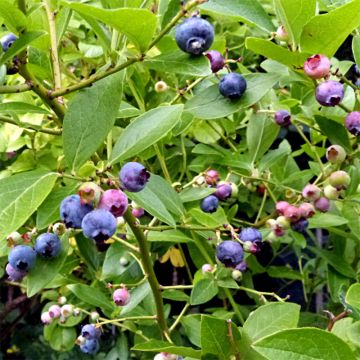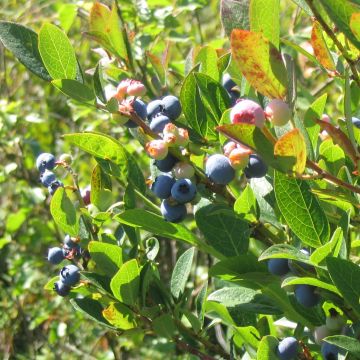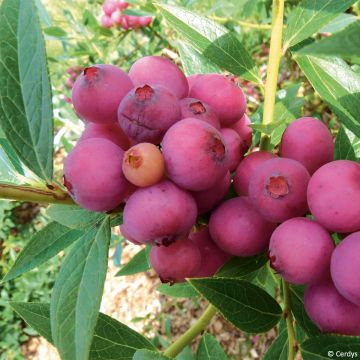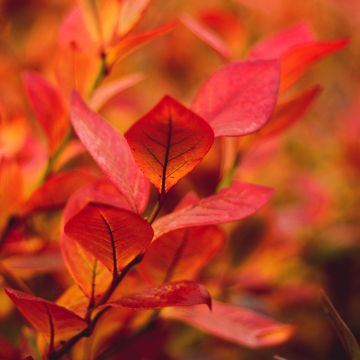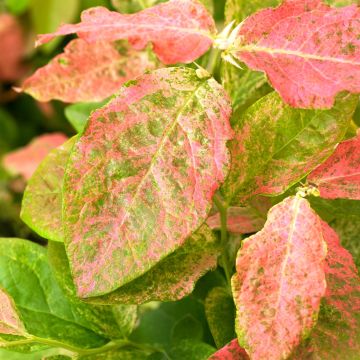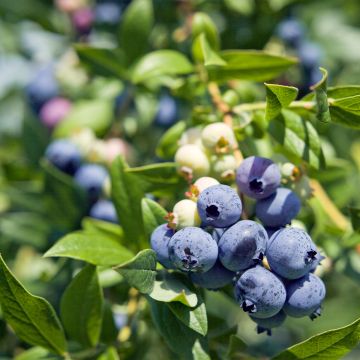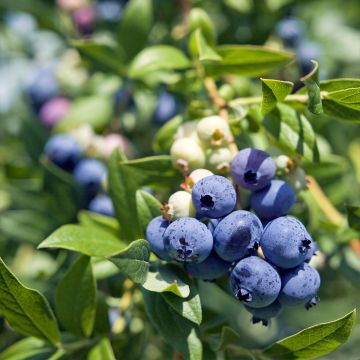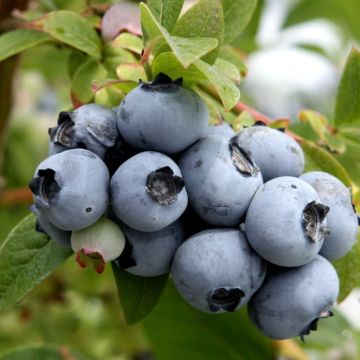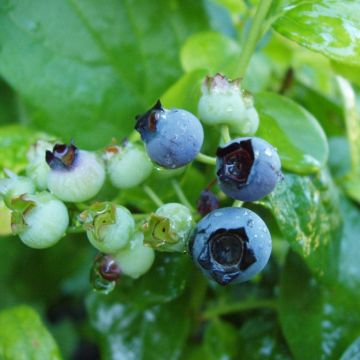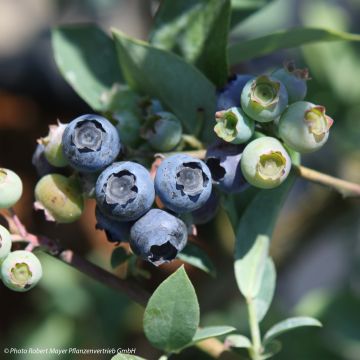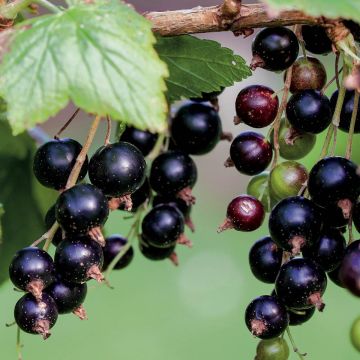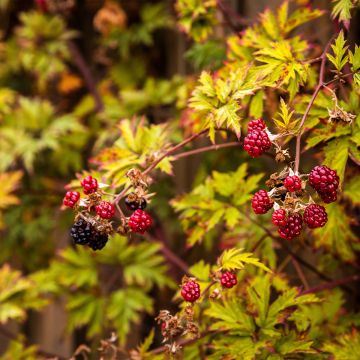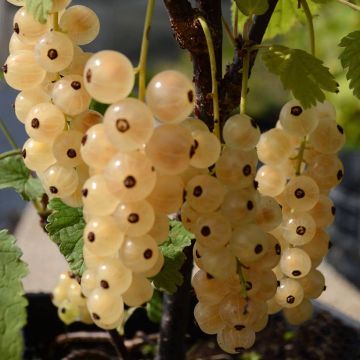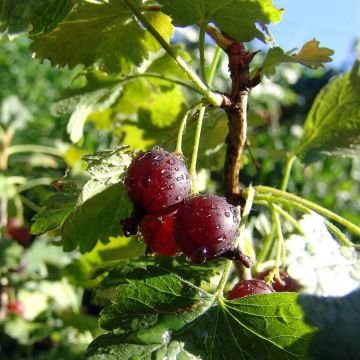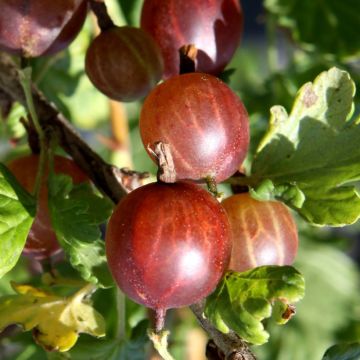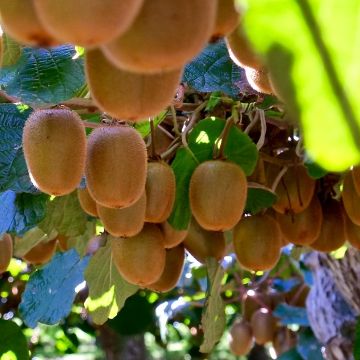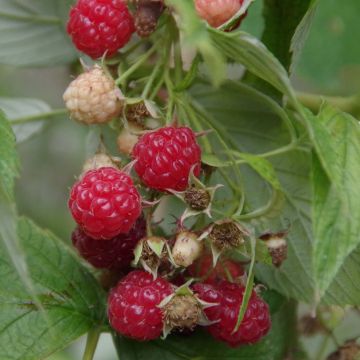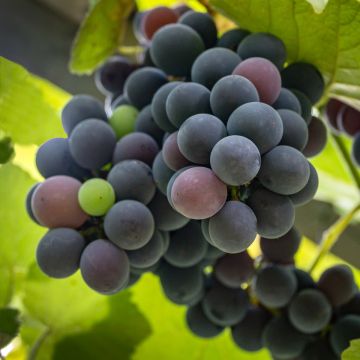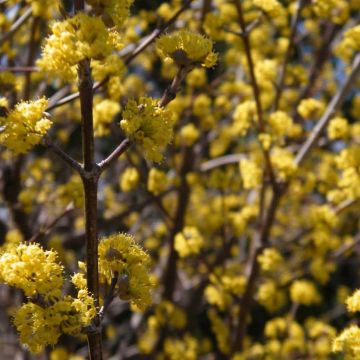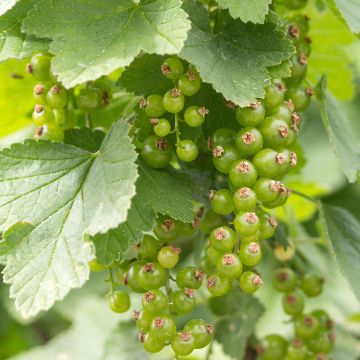

Vaccinium corymbosum Emil- American Blueberry
Vaccinium corymbosum Emil
American Blueberry, Highbush Blueberry
Hello, Thank you for the planting advice for blueberries... Can you recommend me several easy ones... Then I would like to order some kiwis... Which ones? Thank you for your very comprehensive and accessible blogs... :)
Carov, 23/01/2024
This item cannot be shipped to the selected country
Delivery charge from €5.90
More information
Schedule delivery date,
and select date in basket
This plant carries a 6 months recovery warranty
More information
We guarantee the quality of our plants for a full growing cycle, and will replace at our expense any plant that fails to recover under normal climatic and planting conditions.
From €5.90 for pickup delivery and €6.90 for home delivery
Express home delivery from €8.90.

Description
The Blueberry Emil (Vaccinium corymbosum) is a variety that produces small dark blue fruits. The slightly acidic blueberries are very aromatic, reminiscent of wild blueberries. The cultivated Blueberry is a bush that can reach a height of 1.50m (5ft), growing in acidic soils. Planting is ideally done in autumn or anytime throughout the year, excluding frost, for a harvest starting from mid-July.
The Blueberry belongs to the Ericaceae family, like heathers and rhododendrons. There are two types:
- the wild blueberry (Vaccinium myrtillus), a small bush of about 30 cm (12in), naturally growing in the undergrowth
- the cultivated blueberry (Vaccinium corymbosum) originating from North America, grown in gardens. It produces larger and more abundant fruits and can reach a height of 1.50m (5ft).
The cultivated Blueberry (Vaccinium corymbosum) like the Emil variety is a very hardy bush, forming a dense bush with an upright habit, reaching a height of 1.50m (5ft), with a spread of 80cm (32in). The deciduous leaves are 2 to 3 cm (1in) long, lanceolate, elliptical, entire and dentate, medium green, turning bright orange in autumn. Flowering occurs in early May, in the form of small white bell-shaped flowers with slightly reddish edges, 0.5 to 1 cm (0in) long, clustered in pendulous clusters 2 to 5 cm (1 to 2in) long, at the ends of the stems. This is followed by the formation of dark blue berries, particularly dark for this variety, covered in bloom, slightly flattened, 1 cm (0in) in diameter. They ripen in summer, with the first harvest appearing from the 2nd year of cultivation. On the same plant, the harvest will be staggered depending on the ripeness of the fruits. Blueberries are firm and sweet, with a pleasantly acidic taste. Blueberries are low in calories but high in nutritional value: they are very rich in vitamin A, B and C, calcium and iron. They are best consumed freshly picked, enjoyed as juice, jam, jelly, sorbet or in pastries (pies, muffins...). Blueberries can be stored for about ten days after picking and can be frozen for longer preservation.
To ensure good pollination and fruiting, it is recommended to plant at least 2 to 3 Blueberry plants, of the same variety or different varieties (including self-fertile varieties). In the garden, Blueberries will integrate perfectly into acidic soil beds, with rhododendrons, azaleas, hydrangeas, heathers...
Report an error about the product description
Vaccinium corymbosum Emil- American Blueberry in pictures
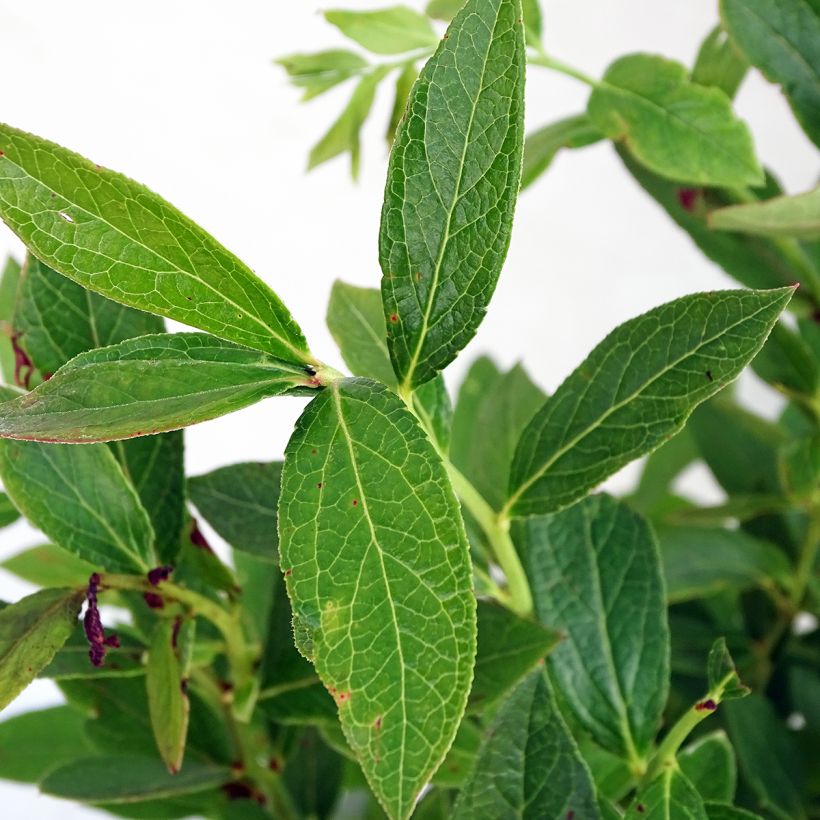



Plant habit
Fruit
Flowering
Foliage
Botanical data
Vaccinium
corymbosum
Emil
Ericaceae
American Blueberry, Highbush Blueberry
North America
Other Blueberry bush
Planting and care
Planting of the Blueberry bush is ideally done in autumn or year-round in frost-free conditions. This bush should be planted in full sun in the North of France and preferably in partial shade in the South. Choose a sheltered spot. If you are planting multiple plants, space them 1.20m (4ft) apart in all directions. The Blueberry bush is very hardy (-30°C (-22°F) for the plant but -5°C (23°F) for the flowers) and has a particularly long lifespan.
Plant it in acidic soil (pH between 4 and 5.5), incorporating pure heath soil or a mixture of regular soil and peat, well-decomposed bark compost. The collar should be level with the ground. Firmly press down and water generously. In slightly chalky soil, dig a hole 50 to 60cm (20 to 24in) deep, line the edges with a garden felt, place a non-chalky gravel layer 10cm (4in) thick at the bottom, then fill with a mixture of heath soil.
The soil should remain moist but not waterlogged: the plant can tolerate moderate drought and dislikes stagnant moisture. If watering is necessary, use non-chalky and non-chlorinated water (e.g. rainwater). Mulch the base with shredded bark, straw, or fern leaves. It is sometimes useful to place a protective net if birds become too greedy during harvest time. In spring, annually apply a little well-rotted compost on the surface. The Blueberry bush is not very susceptible to diseases and pests.
Planting period
Intended location
Care
-
, onOrder confirmed
Reply from on Promesse de fleurs
Berries
Haven't found what you were looking for?
Hardiness is the lowest winter temperature a plant can endure without suffering serious damage or even dying. However, hardiness is affected by location (a sheltered area, such as a patio), protection (winter cover) and soil type (hardiness is improved by well-drained soil).

Photo Sharing Terms & Conditions
In order to encourage gardeners to interact and share their experiences, Promesse de fleurs offers various media enabling content to be uploaded onto its Site - in particular via the ‘Photo sharing’ module.
The User agrees to refrain from:
- Posting any content that is illegal, prejudicial, insulting, racist, inciteful to hatred, revisionist, contrary to public decency, that infringes on privacy or on the privacy rights of third parties, in particular the publicity rights of persons and goods, intellectual property rights, or the right to privacy.
- Submitting content on behalf of a third party;
- Impersonate the identity of a third party and/or publish any personal information about a third party;
In general, the User undertakes to refrain from any unethical behaviour.
All Content (in particular text, comments, files, images, photos, videos, creative works, etc.), which may be subject to property or intellectual property rights, image or other private rights, shall remain the property of the User, subject to the limited rights granted by the terms of the licence granted by Promesse de fleurs as stated below. Users are at liberty to publish or not to publish such Content on the Site, notably via the ‘Photo Sharing’ facility, and accept that this Content shall be made public and freely accessible, notably on the Internet.
Users further acknowledge, undertake to have ,and guarantee that they hold all necessary rights and permissions to publish such material on the Site, in particular with regard to the legislation in force pertaining to any privacy, property, intellectual property, image, or contractual rights, or rights of any other nature. By publishing such Content on the Site, Users acknowledge accepting full liability as publishers of the Content within the meaning of the law, and grant Promesse de fleurs, free of charge, an inclusive, worldwide licence for the said Content for the entire duration of its publication, including all reproduction, representation, up/downloading, displaying, performing, transmission, and storage rights.
Users also grant permission for their name to be linked to the Content and accept that this link may not always be made available.
By engaging in posting material, Users consent to their Content becoming automatically accessible on the Internet, in particular on other sites and/or blogs and/or web pages of the Promesse de fleurs site, including in particular social pages and the Promesse de fleurs catalogue.
Users may secure the removal of entrusted content free of charge by issuing a simple request via our contact form.
The flowering period indicated on our website applies to countries and regions located in USDA zone 8 (France, the United Kingdom, Ireland, the Netherlands, etc.)
It will vary according to where you live:
- In zones 9 to 10 (Italy, Spain, Greece, etc.), flowering will occur about 2 to 4 weeks earlier.
- In zones 6 to 7 (Germany, Poland, Slovenia, and lower mountainous regions), flowering will be delayed by 2 to 3 weeks.
- In zone 5 (Central Europe, Scandinavia), blooming will be delayed by 3 to 5 weeks.
In temperate climates, pruning of spring-flowering shrubs (forsythia, spireas, etc.) should be done just after flowering.
Pruning of summer-flowering shrubs (Indian Lilac, Perovskia, etc.) can be done in winter or spring.
In cold regions as well as with frost-sensitive plants, avoid pruning too early when severe frosts may still occur.
The planting period indicated on our website applies to countries and regions located in USDA zone 8 (France, United Kingdom, Ireland, Netherlands).
It will vary according to where you live:
- In Mediterranean zones (Marseille, Madrid, Milan, etc.), autumn and winter are the best planting periods.
- In continental zones (Strasbourg, Munich, Vienna, etc.), delay planting by 2 to 3 weeks in spring and bring it forward by 2 to 4 weeks in autumn.
- In mountainous regions (the Alps, Pyrenees, Carpathians, etc.), it is best to plant in late spring (May-June) or late summer (August-September).
The harvesting period indicated on our website applies to countries and regions in USDA zone 8 (France, England, Ireland, the Netherlands).
In colder areas (Scandinavia, Poland, Austria...) fruit and vegetable harvests are likely to be delayed by 3-4 weeks.
In warmer areas (Italy, Spain, Greece, etc.), harvesting will probably take place earlier, depending on weather conditions.
The sowing periods indicated on our website apply to countries and regions within USDA Zone 8 (France, UK, Ireland, Netherlands).
In colder areas (Scandinavia, Poland, Austria...), delay any outdoor sowing by 3-4 weeks, or sow under glass.
In warmer climes (Italy, Spain, Greece, etc.), bring outdoor sowing forward by a few weeks.

































